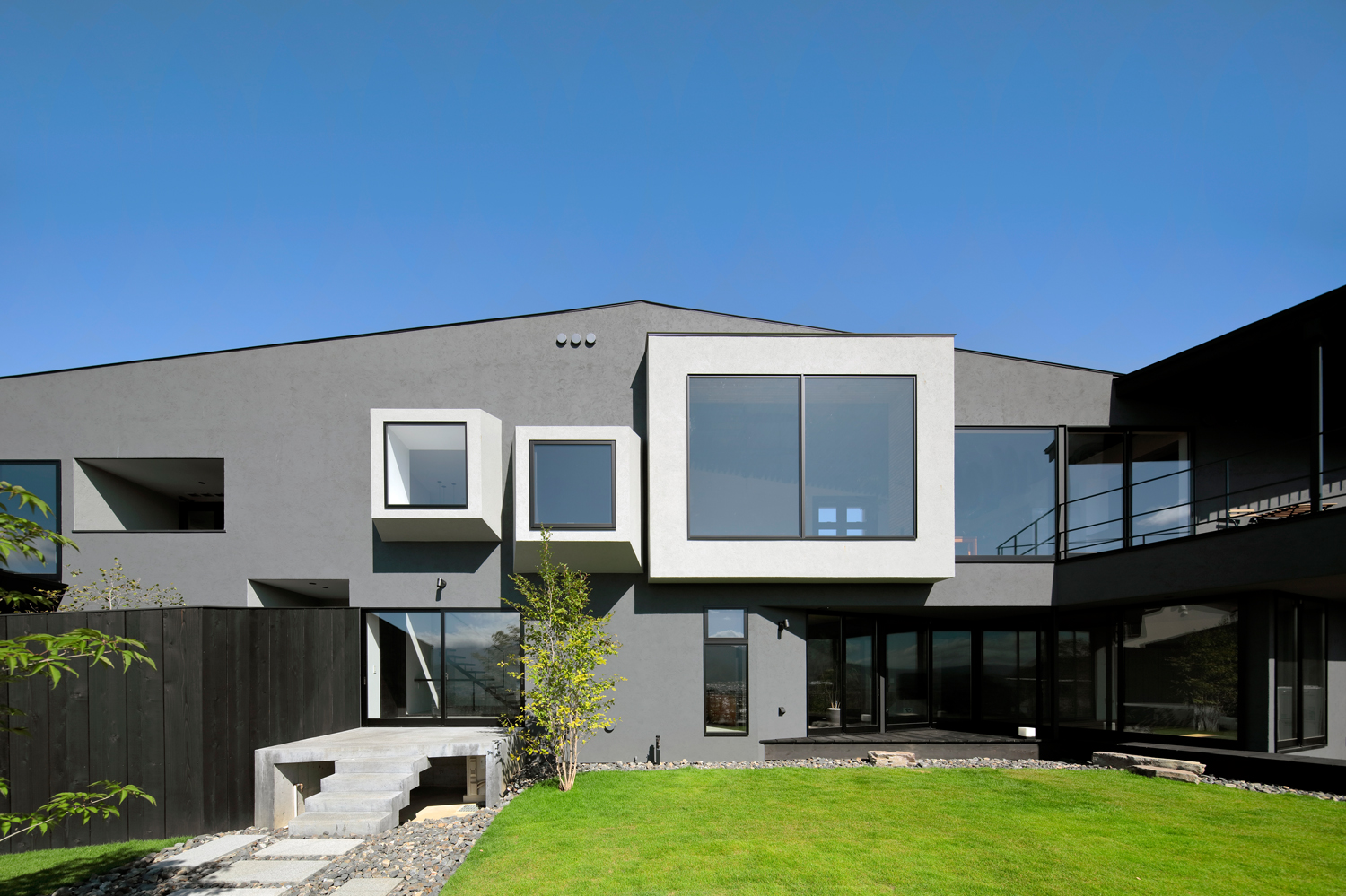

CUBO Design Architect is an architectural design office led by Hitoshi Saruta, based in Oiso, Kanagawa prefecture in Japan. They not only design a variety of spaces and structures such as houses, commercial buildings, public building, apartment buildings and flats, but we also do renovations and product and graphic design. CUBO Design Architect welcomes requests from any part of Japan as well as overseas.
2004년 건축가 Hitoshi Saruta가 설립한 CUBO Design Architect는 일본 Kanagawa현 Oiso를 기반으로 하는 건축/디자인 스튜디오다. 이들은 주택, 상업공간, 공공 건축물, 아파트 공간을 설계하는 것을 넘어 제품 디자인, 그래픽 디자인 등 다양한 영역의 디자인 작업까지 아우르고 있다.
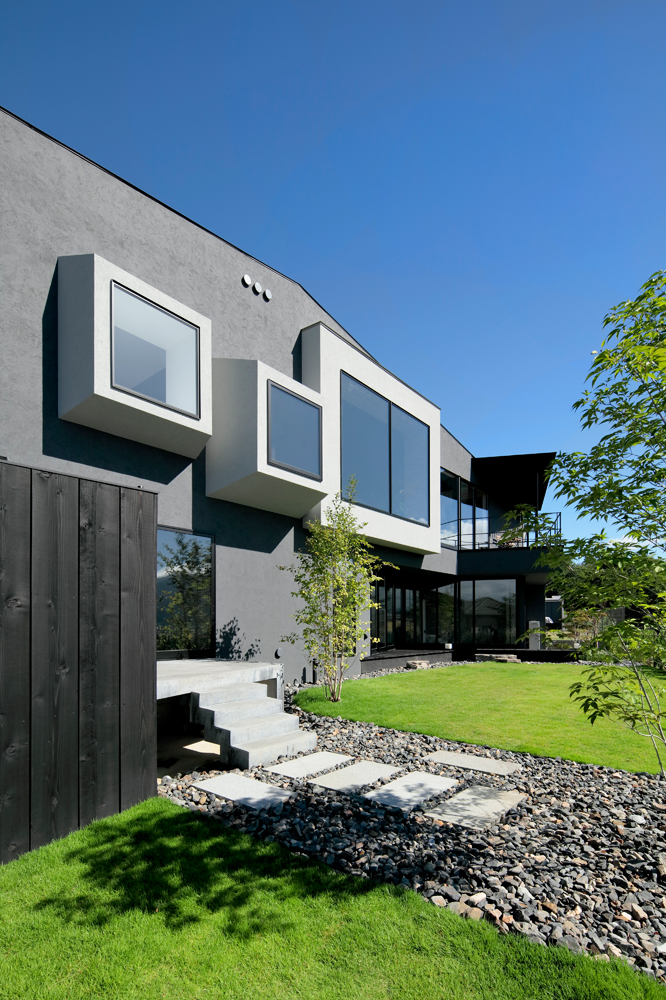
This residence overlooking the city of Matsumoto with its famous castle and the beautiful mountain ridgeline beyond was designed for the mother of lead architect Hitoshi Saruta and guided by memories of his own childhood in Matsumoto. The house frames its sweeping views in a way that constantly reveals fresh discoveries in the changing color of the sky, the movement of the clouds, the mood of the mountains, and the shifting seasons.
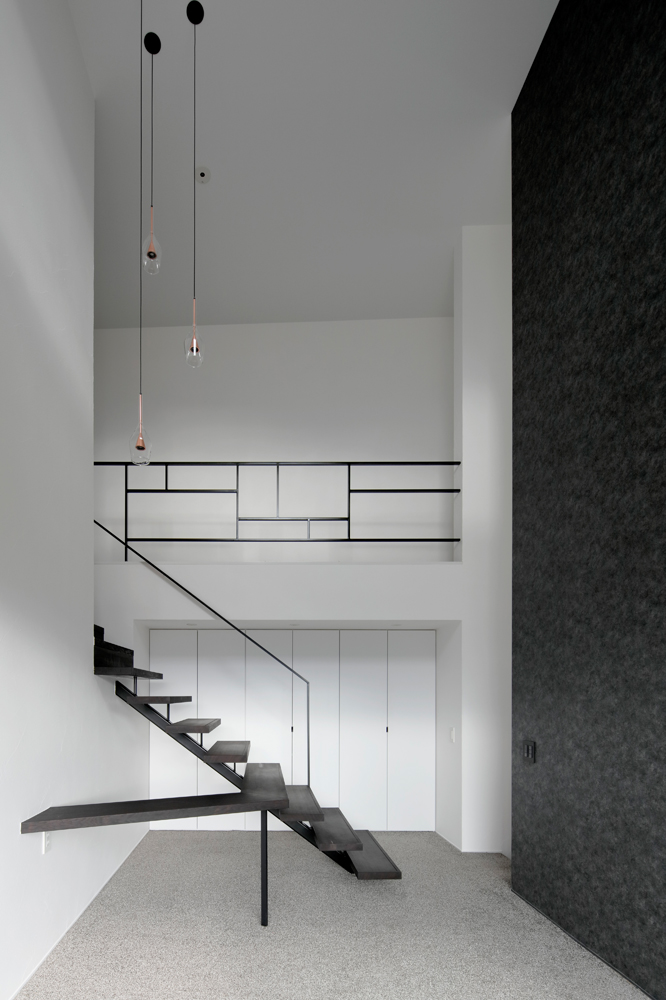
이번 프로젝트 M4의 사이트는 Nagano Matsumoto의 마쓰모토성(松本城)과 서쪽의 히다 산맥, 동쪽의 지쿠마 산지가 아름다운 풍경을 만들어내는 곳이다. 건축가 Hitoshi Saruta의 유년시절 추억이 남아있는 이곳은 현재 건축가의 어머니와 누이들이 생활하고 있다. 주택은 Matsumoto 시(市)의 변화무쌍한 하늘, 구름의 움직임, 산이 자아내는 압도적인 풍경, 계절의 변화와, 이를 통해 시시각각 변화하는 자연광을 담아내는 데 집중해 설계됐다.
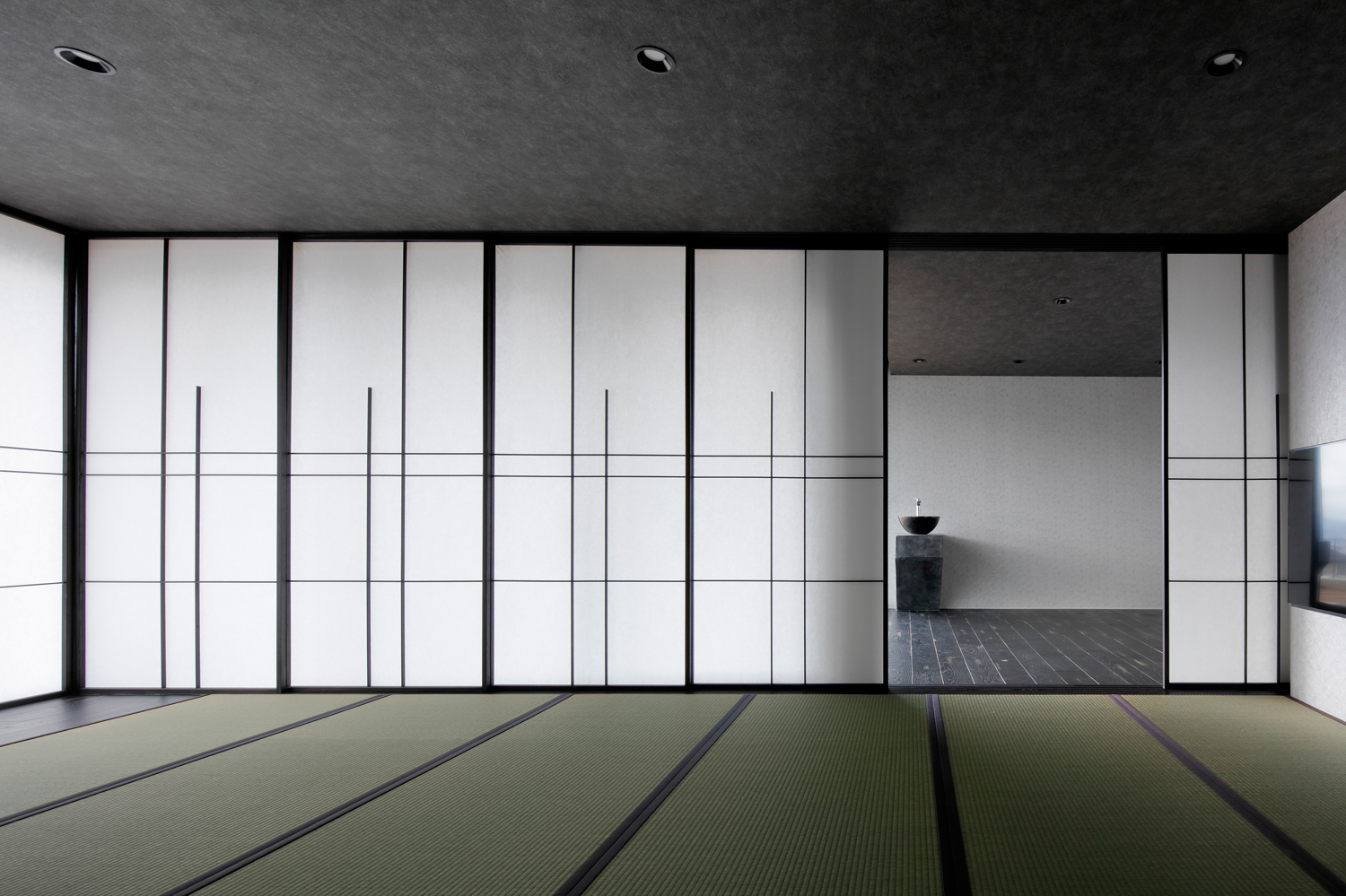
There are no windows on the side of the house facing the road due to privacy concerns, but many on the opposite side facing the landscape. Natural light therefore comes exclusively from one direction, which increases contrasts in the lighting and, together with the placement of the windows, results in a strongly shadowed spatial structure.
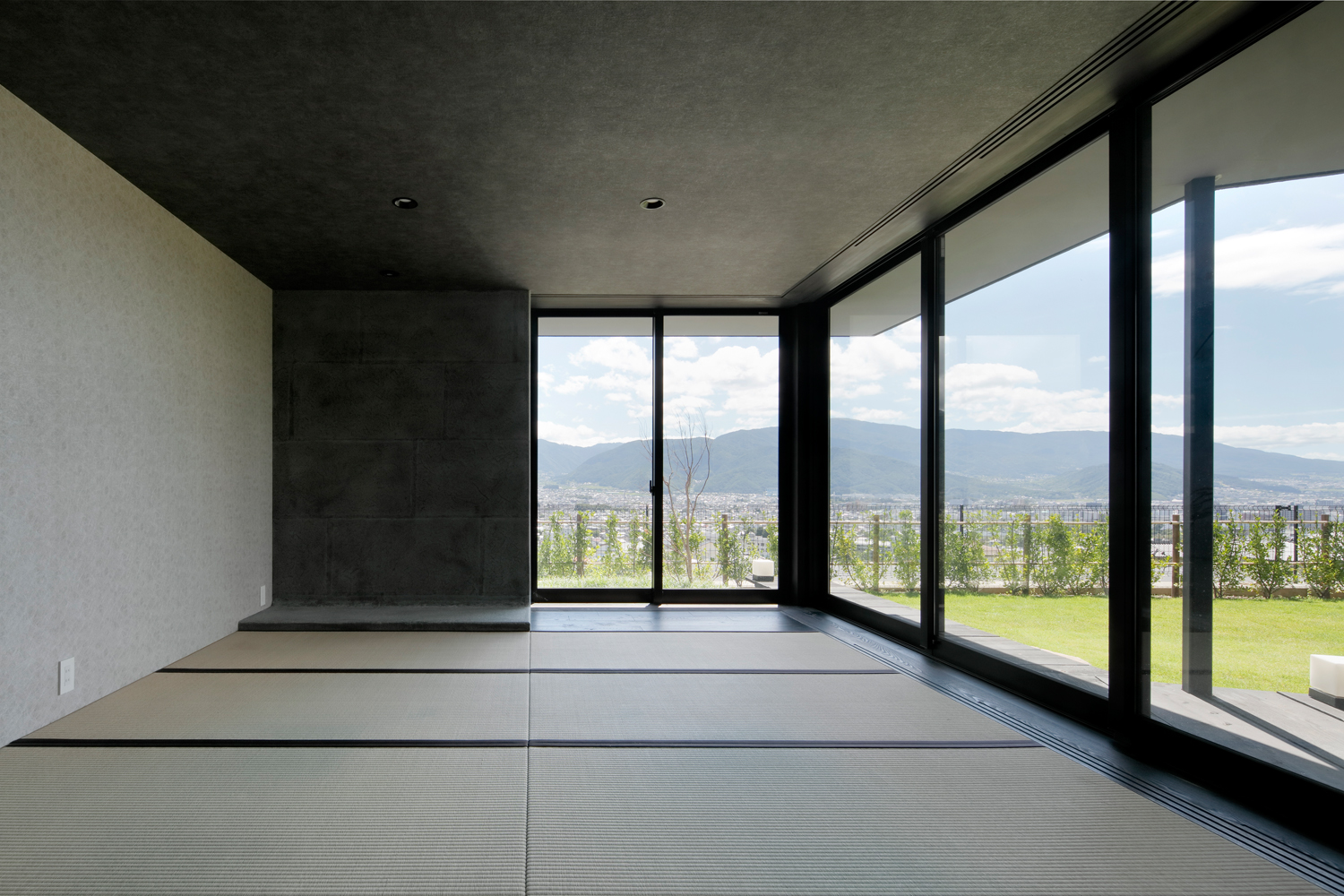
주택은 기다란 평면을 가지고 있으며, 특히 1층의 평면은 안쪽 정원을 향해 살짝 구부러져 있는 구조다. 일본 전통 방식인 다다미 방과 툇마루에서는 주택 내부의 정원을 바라보기 좋고, 넓은 창을 통해 남쪽으로 들어오는 자연광이 주택 내부 깊숙이 들어오도록 고려했다. 다다미 방에는 전통식 미닫이 창호를 모던한 감각으로 재해석해 다다미 방과 인접한 서예실, 마스터 베드룸으로 입체적인 자연광이 투과되도록 했다.
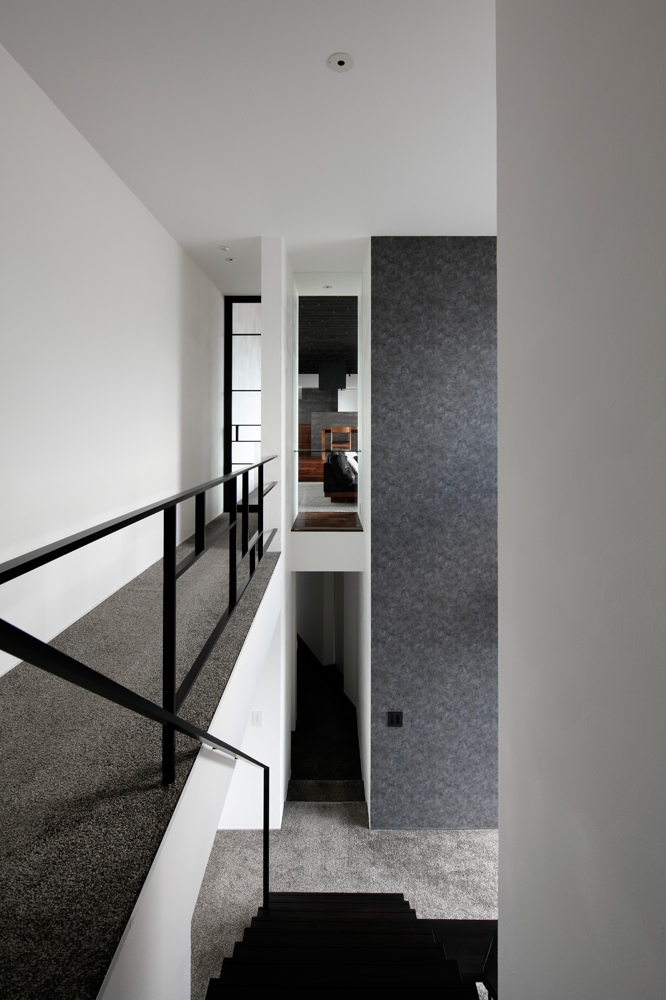
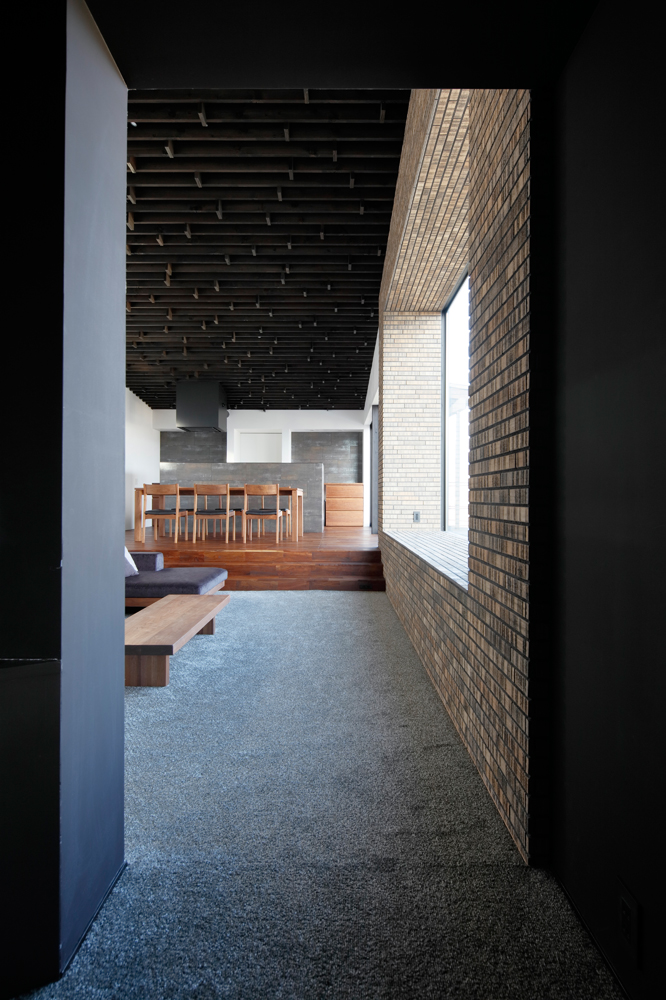
Although the windows at first appear randomly placed, they are in fact carefully designed so that their varied sizes, depths, heights, finishes, and shapes present a diverse sequence of scenes whether the viewer is sitting or standing.
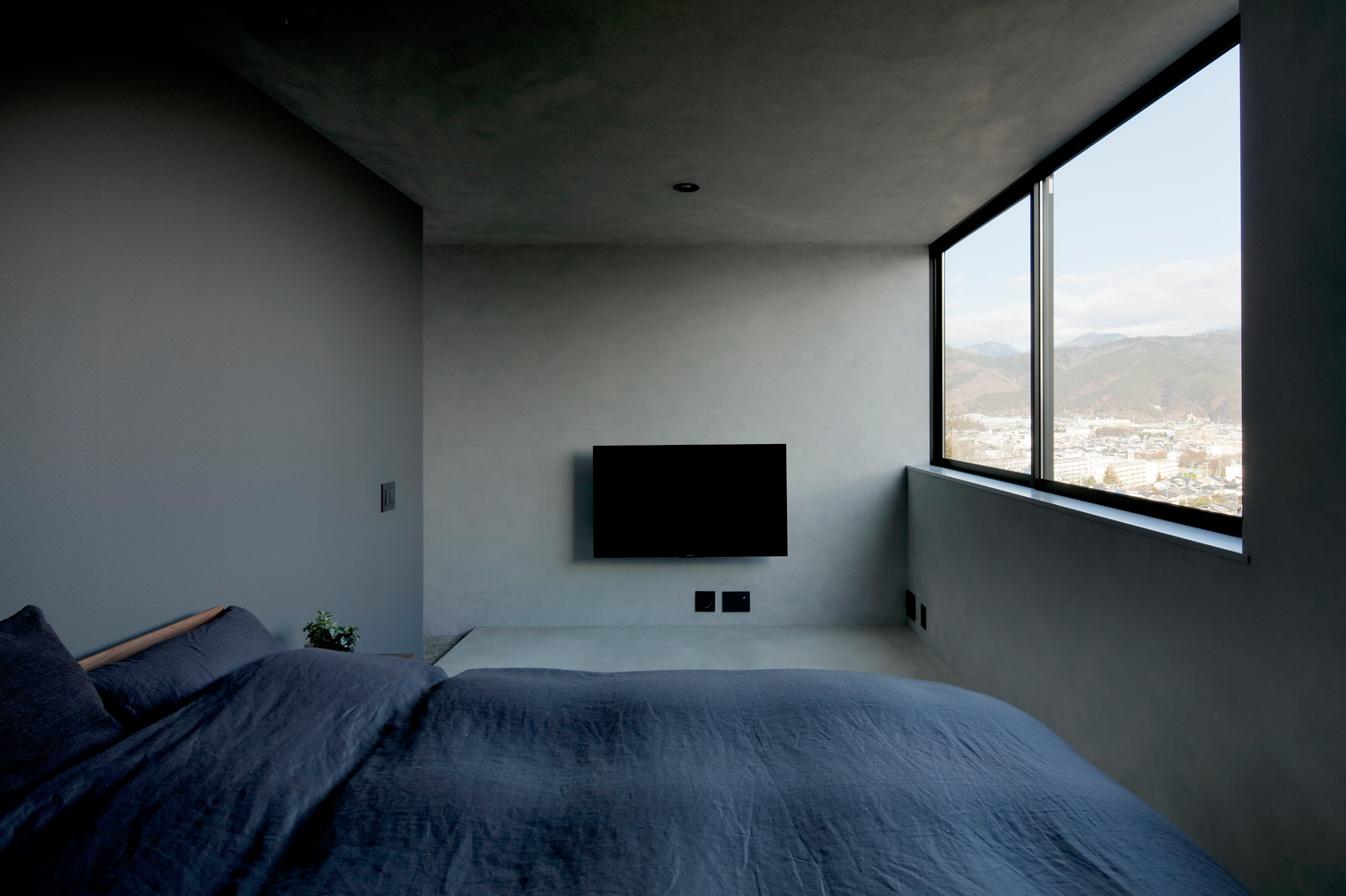
여러 창은 무작위로 구성한 듯 보이지만, 앉거나 서서 외부의 뷰를 바라보는 것을 고려해 각 창의 크기, 깊이, 높이, 마감과 형태를 세심하게 고려했다. 이를 통해 집안의 어느 층, 어느 공간에 있더라도 도시와 성(成), 산맥이 만들어내는 다양한 장면을 감상할 수 있다.
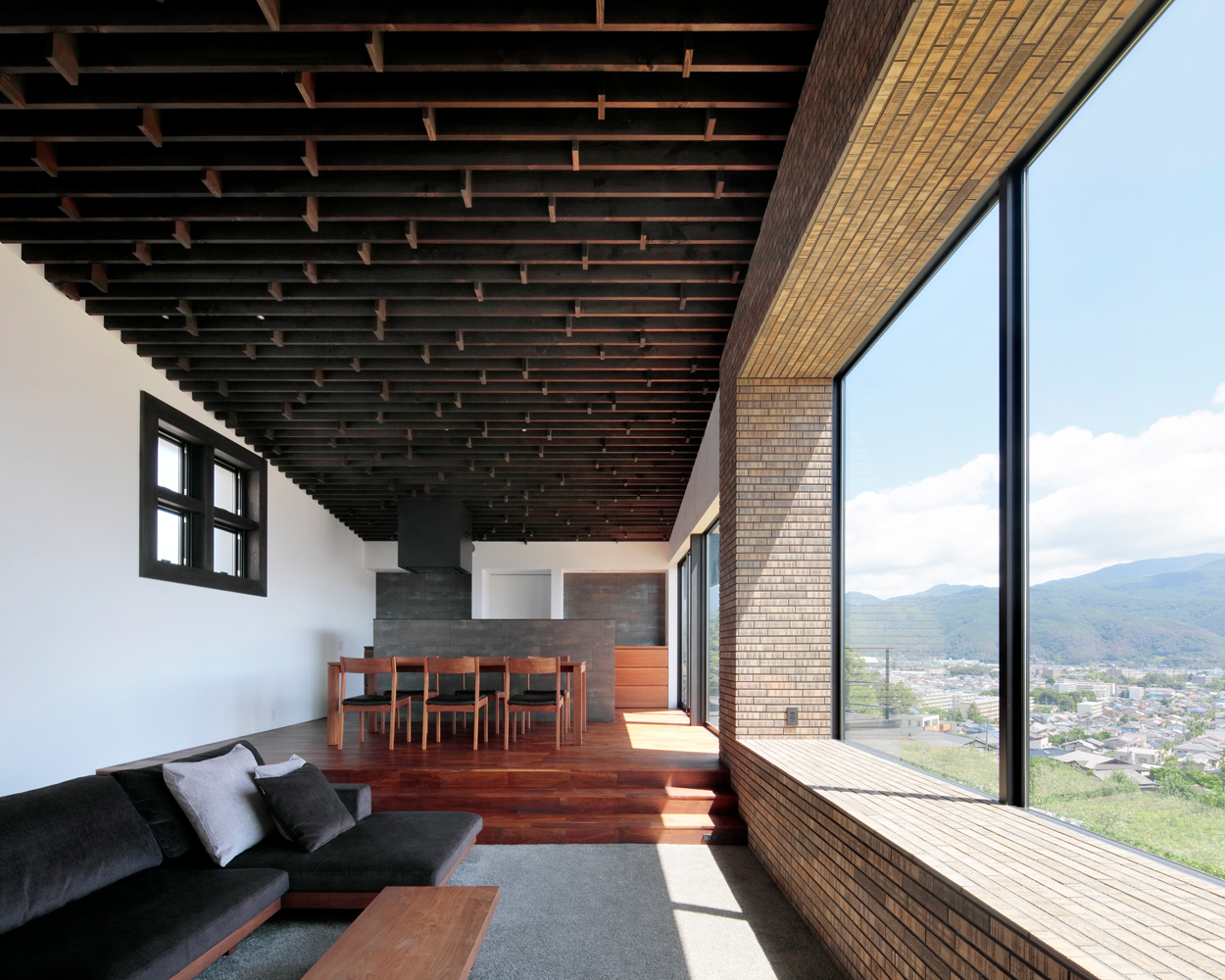
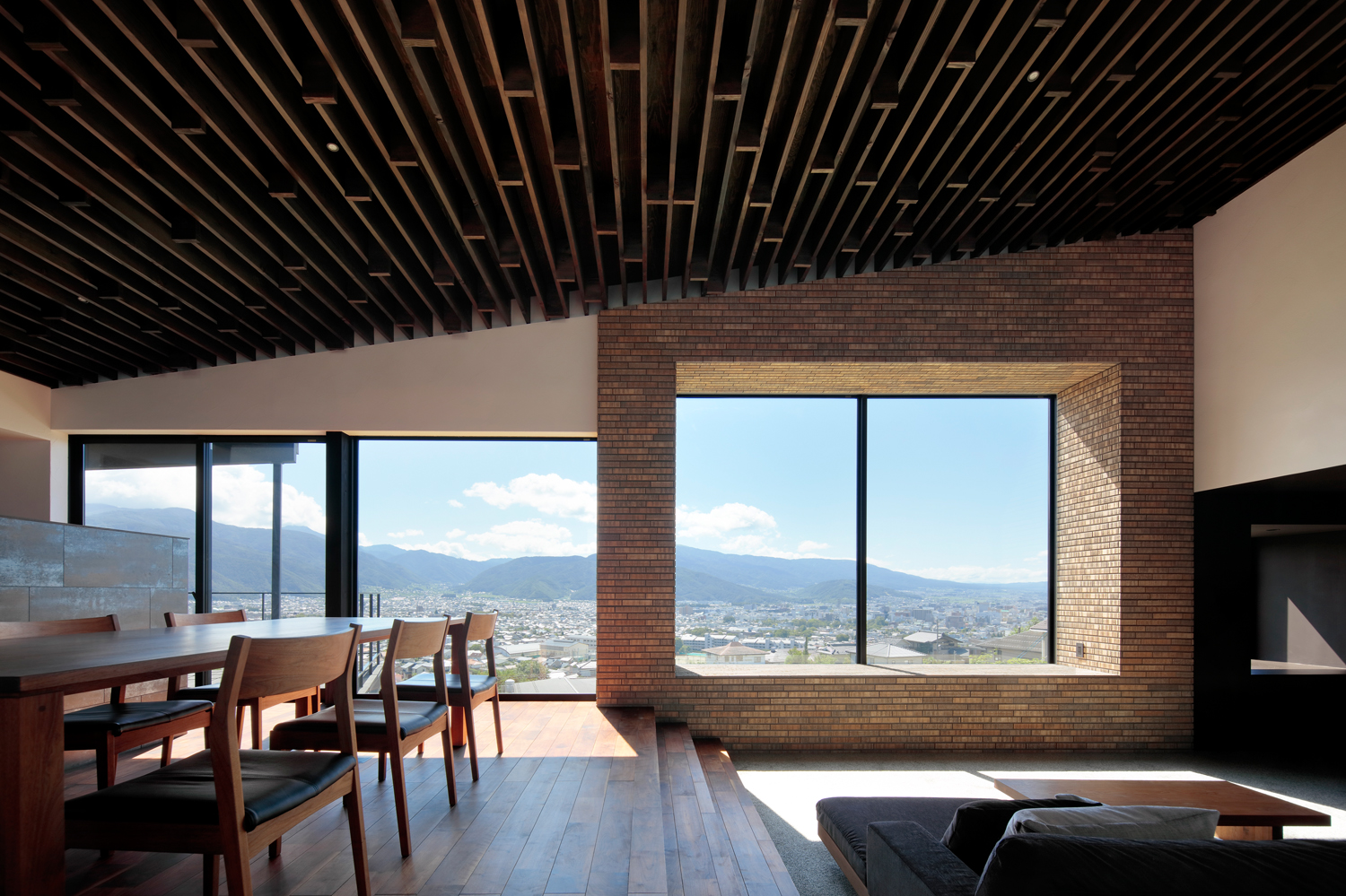
The barnacle shape of the bay windows serves to heighten this framing effect, as well as to create a striking exterior appearance and deepen the shadows inside. Because the structure follows the V-shape of the property, the broad plain occupied by Matsumoto and its neighboring cities is visible from anywhere inside.
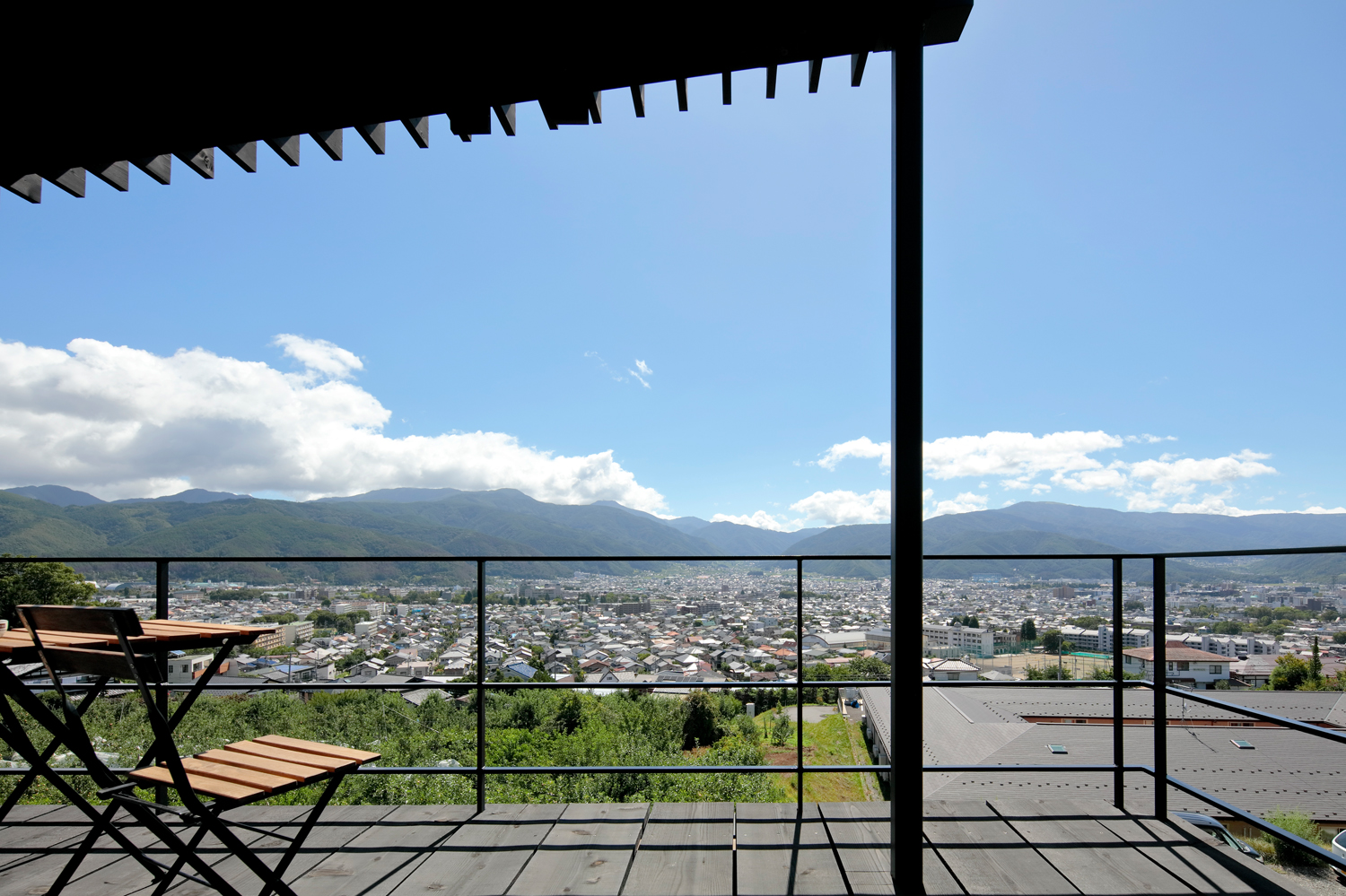
2층에는 거실과 다이닝, 주방이 위치한다. 외부에서 보았을 때 따개비가 붙어있는 듯 구성한 2층의 출창(出窓: Bay window)은 각각 다른 형태와 깊이로 인해 외부에서 내부로 유입되는 자연광에 다채로움을 더하고, 내부에서 외부를 바라보는 색다른 뷰를 제공한다. 완만한 V자의 대지 형태로 인해 고지대에 위치한 주택 내부 어디에서나 Matsumoto 시와 그 인근을 바라볼 수 있다.
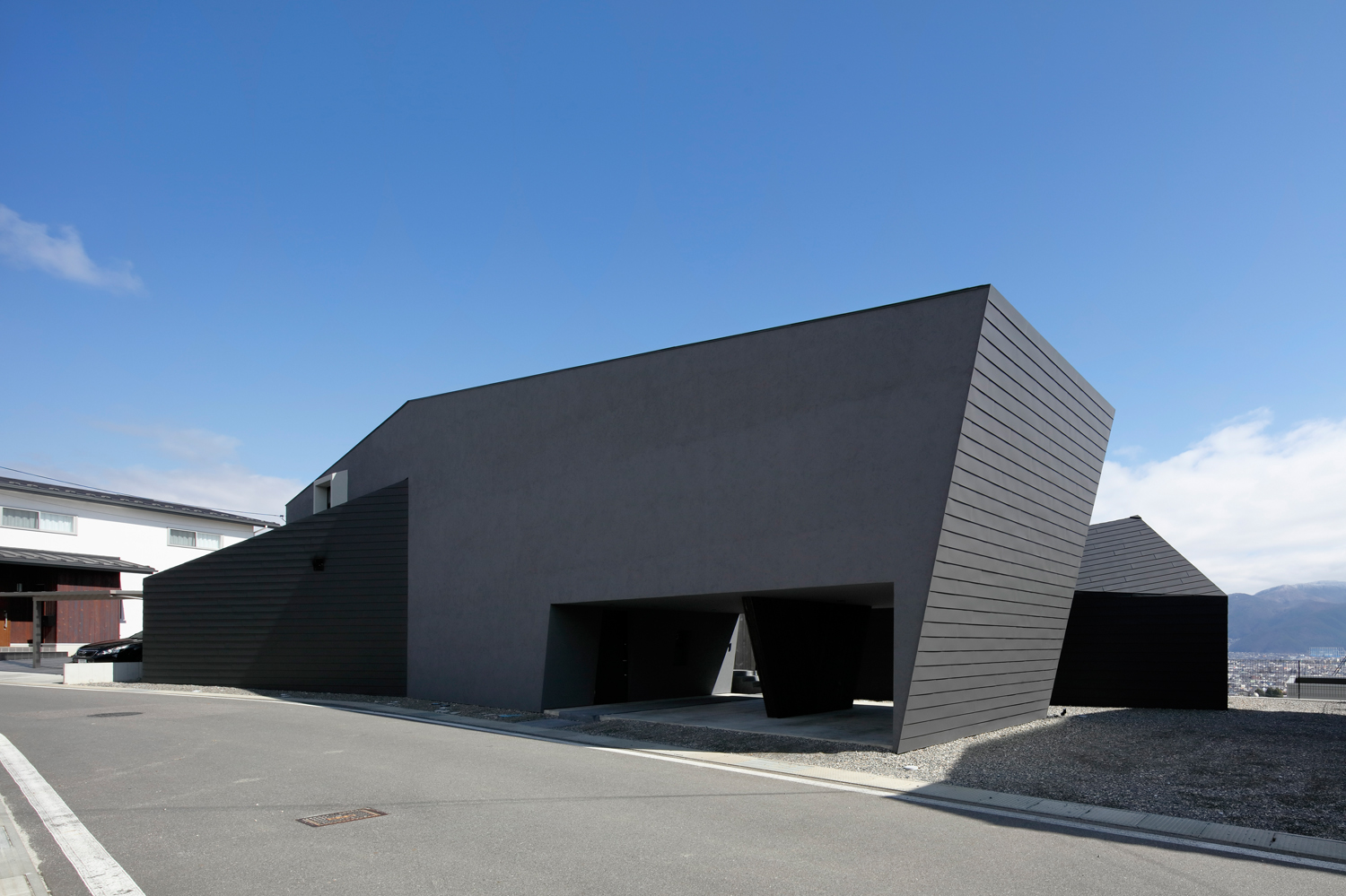
A separate building houses a music room for playing piano. Throughout both buildings, the minimalist interiors feature exposed wood framing arranged in the kaburazuka style, with beams radiating from a central hub. The design evokes Matsumoto’s traditional buildings yet is unique thanks to the varied angles of the roof, achieving a free and bold interior.
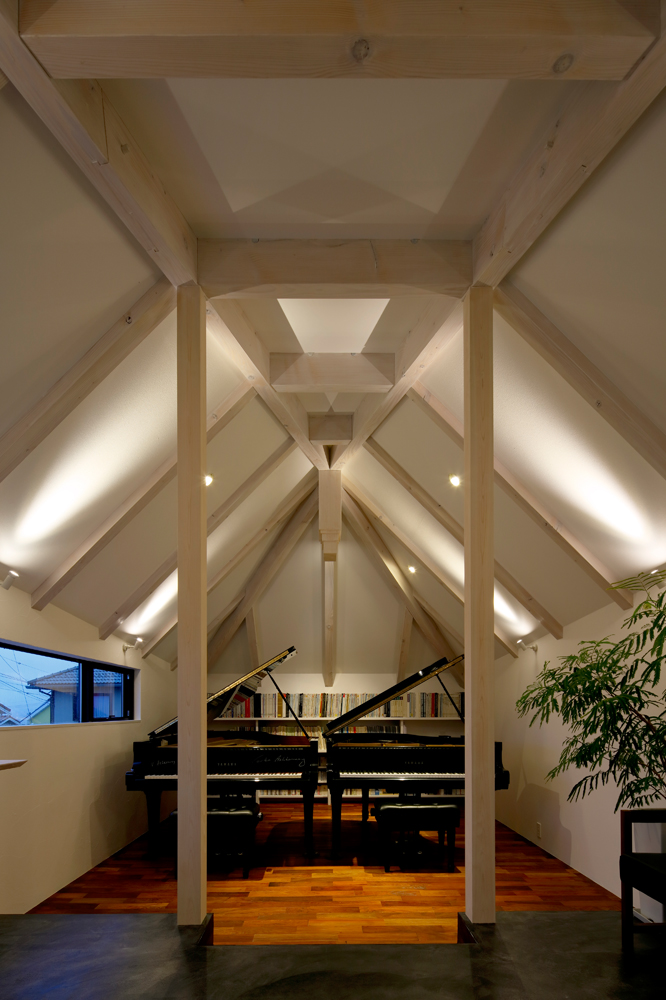
M4에는 독립된 별채가 마련되어 있다. 한쪽 변이 긴 네모지붕의 이 공간은 건축가가 피아노 연주를 즐기는 가족을 위해 준비했다. 두 건물은 모두 목재 보를 노출하는 등 전통적인 Matsumoto 건축 양식을 따랐으며, 내부는 모던하고 미니멀하게 채웠다.











0개의 댓글
댓글 정렬